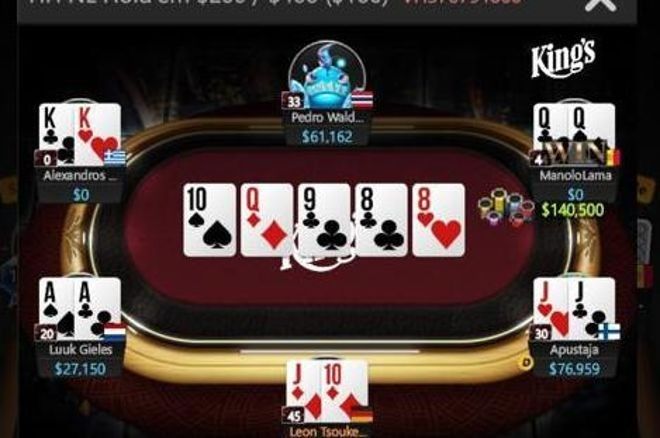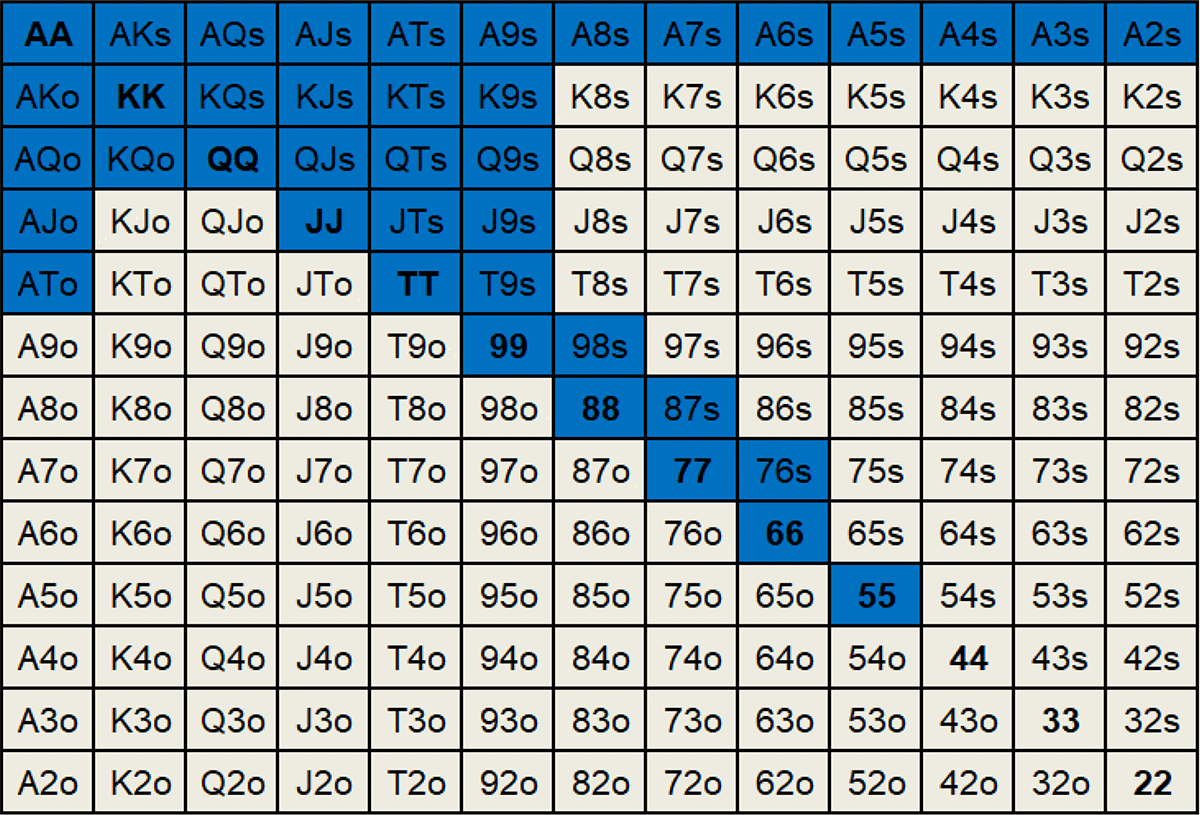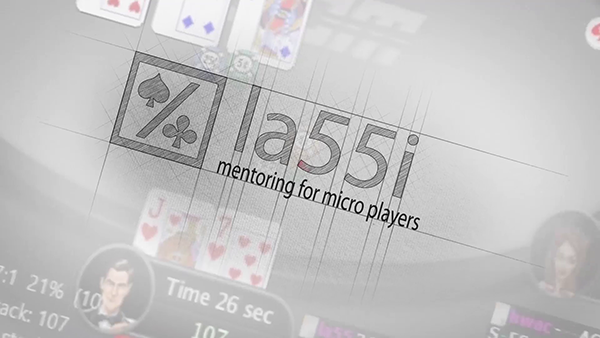Micro Stakes Poker Coaching
I discuss 3 important poker training strategies that micro stakes players must do to improve their skills and ready themselves for moving up.
- Micro Stakes Poker Coaching Odds
- Micro Stakes Poker Coaching Tournaments
- Micro Stakes Poker Coaching Tips
Other poker training sites just aren’t working for you. We play the micro stakes, so we know how to beat them. Not all strategies are effective at the micro stakes, so we only focus on what works, not what doesn’t. You’re tired of losing at the poker table! Losing isn’t fun, we understand your pains. Most poker rooms nowadays are taking around 8-12 big blinds (bb) for every 100 hands that you play at micro stakes. This means that if you were beating your opponents for 15bb per 100 hands, you’d actually only win around 5bb per 100 hands. That’s a huge chunk of your winnings — gone. That’s the challenge of micro stakes games. Hope this helps people. The poker dream is still alive guys, trust me! Sorry about the fuzziness! The information is still in there and you can just about ma. I have written over 700 poker strategy articles for this website now covering how to beat the micro stakes games in particular. And yes, they are all free and they always will be! For a complete list of all my most popular poker strategy articles in recent years (beginner intermediate, advanced and pro), click here.
In case you missed episode 246, I answered 8 of your burning micro stakes poker questions.
Challenge (2:40)
Here’s my challenge to you for this episode: I’m about to give you 3 different training strategies. Which is the one you need to begin improving your game and your skills in order to build a micro stakes bankroll? The choice is up to you! Pick one and run with it.
Now it’s your turn to take action and do something positive for your poker game.
Micro Stakes Poker Training (3:50)
If you’ve read any of my books or listened to this podcast for a while, you’ve heard me discuss tons of ways to study and practice your poker skills.
Micro Stakes Poker Coaching Odds
Today I’m giving you the 3 training strategies that every micro stakes player MUST do to train yourself to become a better poker player.
Micro Stakes Poker Coaching Tournaments

Yep, I’m using the word “train” by choice. One of the definitions for the word “train” is:
A series of parts or elements that together constitute a system for producing a result and especially for carrying on a process automatically
We are training necessary skills into our game at the micro stages for the result of becoming a better, more successful and profitable poker player.
These 3 training strategies are important at any level of poker, but by working on them in the micro stakes, you are setting yourself up for lifetime poker success.
#1: Study and Application (5:15)
The only way you’re going to ingrain new skills into your game is by studying some form of training content then applying what you learn on-the-felt. The item you study might be listening to a podcast, watching a training video or reading an article or a chapter from a book.
By studying this content, you’re doing only the first part which is exposing yourself to new strategy insights. But, that’s not really where skill building takes place. First you learn the strategy, then you practice it over and over again, through on-the-felt application.
Let’s say you want to learn how to make effective value cbets. Well, you can listen to one of my cbet-related episodes, like #133: Cbet Principles. In this episode, I discussed the difference between value and bluff cbets, important HUD stats to look at, bet sizing, the type of player you’re up against and I even gave you a cbetting checklist.
After you listen to the podcast and read the show notes, you must decide on your own how you’ll apply what you learned:
- Are you going to focus on the HUD stats I discussed and use them to make good cbetting decisions?
- Are you going to use the checklists I gave you as you practice your cbetting?
- Will you follow the bet sizing recommendations I gave you?
- Will you focus on position to help you make better cbets?
There are so many ways to apply what I taught in the episode, and it’s your job to choose how you’ll apply what you learned.
Episode #133 Example:
At the 12:50 point, I give you a value cbetting checklist. The first item on the list is: “You must be able to name the weaker hands they can call you with.”
You realize that you’ve never actually done this. Every time you value cbet, it’s simply based on the strength of your holding, not really thinking about what your opponent can call you with.
So, you decide in your next session that for every value cbet you make, you will say aloud the hands that they can give you value. It might take you multiple sessions to get comfortable with this strategy, so you apply it over the next 4 sessions.
Bam! Now, you’ve learned a little something about value cbets and you’ve applied it multiple times.
You’ve trained yourself to become a better value cbettor. This skill will be useful for the rest of your time at the micros and beyond.
If we distill the prior example to its basic steps, here’s what happened:
Step 1. You learned new strategies for value cbetting by listening to the podcast and reading the show notes.
Step 2. You applied one of the strategies on-the-felt repeatedly over 4 sessions.
From these 2 steps of Study and Application the result was you improved your cbetting skills.
From this point forward, it’s going to be up to you to do this over and over again… study and application, study and application, study and application. Do this to turn yourself into the poker player you want to be.
But, how do you know what to study next?
#2: Know Yourself and Target Un-Comfortability (8:45)
How many times have you opened the pot preflop with A9s, somebody makes a 3bet, and then you thought to yourself, “Crap, what do I do now?”. Or, how many times have you made the cbet IP and then your opponent check-raised you? “Crap, not again!” Or, here’s another one: how many times have you been dealt JJ in the SB with a 3bet squeeze opportunity, and you didn’t know whether to squeeze or just call?
We are often not as “present” or “tuned-in” to our play session as we should be. We encounter a ton of these uncomfortable spots, sometimes over and over again. But, we don’t recognize it as an area that needs work. We don’t tag or take note of the spot to help us remember to study it later on off-the-felt.
That’s what this 2nd training strategy is all about.
By knowing yourself and knowing what situations cause you problems, you can work to remove these areas of un-comfortability one at a time. By doing so, you’re building your skills, adding to your confidence and making poker easier. All of these things will make your sessions more profitable and will eventually propel you beyond the micro stakes.
Know Yourself Example
Let’s say you worked on your cbetting skills as mentioned previously, but as you practiced your cbetting you realized that every donk bet you faced gave you a tough decision.
Sometimes they would donk bet 1bb, sometimes ½ pot, and other times full-pot or bigger. What do these bets mean? Why are they donk betting and not check-raising me? Why not just check and fold? Are they betting for value or bluffing me, or are they blocking bets to get me to not charge them more to see the next street?
Now that you realize you don’t know what donk bets represent nor how to respond to them, you take the opportunity to study them. You’re going to go back to training strategy #1 of Study then Application.
You find that I did an episode on donk betting called The Donk Bet, #146. You decide to listen to the episode and follow along with the show notes.
In this one, I taught you all about the donk bet: what they mean, what different sizes mean, making them, facing them, how to study them… I basically covered the donk betting gamut.
So, you decide to apply what you learned in two ways:
1. You’re going to practice making donk bets as well as practice calling and raising donk bets you face.

2. You’re going to filter in your database for donk bets you faced that went to showdown. This way you can work to learn what hand strengths different player types donk bet with, and you’ll pay attention to the bet sizing they use for donk bets.
Bam! You’ve taken your un-comfortability with donk bets and pursued a new avenue of study and application. Now, you’re an even better player when it comes to being the preflop raiser.
Use code POD10 for 10% off this month’s webinar…
#3: Daily Hand Reading Exercises (15:25)
In last week’s Q&A, you heard me answer a question about hand reading. Let me reiterate my answer to that question here: yes, even at the micro stakes, hand reading is a great skill to develop.
I know you do not want to stay at the micro stakes forever. You’re working in the micro stakes to train yourself to be a great poker player, and the most important poker skill to have is hand reading.

Here’s the biggest incentive to develop the skill of hand reading: it forces you to think through the logic that your opponents use as they make their decisions.
This off-the-felt attention to their logic will naturally bleed into your on-the-felt game.
Just imagine: you’ve been doing one full hand reading exercise every day over the past 30 days. In each of these exercises, you constantly ask yourself on each street:
“Which hands does my opponent make this play with?”
By asking and answering this question over and over again, you’re training this into a mental game habit.
Naturally, when you play, you’ll ask and answer this same question.
- Villain called your preflop open-raise from the BB; What hands do they call with?
- They check-called your cbet; What hands do they call with on this board that also called preflop?
- They donk bet into you on the turn when the 3rd spade hit; What hands do they bet, out of position, on this very wet board that called preflop and called on the flop?
Micro Stakes Poker Coaching Tips
Truly, it’s important for micro stakes players
Hand reading is so important because within poker, we are dealing with imperfect information. We don’t know the cards our opponent is holding, but we can use what we know about their play style and their actions to put them on a range of hands. Then, we make our plays based on this range in an effort to make them fold or gain value from them.
A lot of people think that you can’t do micro stakes hand reading because people play too many hands and play them erratically. And while that can be true, that’s not always the case. And, even if they are playing tons of hands, they’re still using some form of logic to make their decisions. They aren’t just flipping a coin or rolling a die.
To help you learn hand reading successfully, I recommend you do it with ranges that are tighter in general. Don’t do hand reading with limping ranges or limp-calling ranges or being the 5th caller in the BB. Those are way too wide.
Keep your hand reading exercises to these 4 common and more narrow ranges:
- Preflop open-raising range. Depending on the position and the player, it might be as narrow as 10% or as wide as 30%.
- The preflop caller vs an open-raise. 10% up to 40% range.
- Preflop 3bettor. Maybe 3% up to a 15% range (player and position dependent).
- The 3bet caller. They opened the pot, faced your 3bet and chose to call instead of folding or 4betting. This is often somewhere from 5% up to 25% range.
So, you can see these four situations are not dealing with crazy wide ranges. Plus, they’re the most common ranges you’ll be up against.
Recapping the 3 most important micro stakes training strategies:
1. Study and Application. You learn new strategies then you apply them on-the-felt in order to build skills.
2. Know Yourself and Target Un-Comfortability. If you focus on those uncomfortable spots by using them to select your studies and applying what you learn, you’ll make poker easier on yourself.
3. Daily Hand Reading Exercises. As you study and apply what you learn, do daily hand reading exercises in relation to the strategies you’re studying. This will build a beneficial habit of working through your opponent’s ranges and the logic they use in their decisions.
Support the Show

Rob Papandrea and John Lutz picked up the best poker software, PokerTracker 4. My favorite since 2006! In appreciation, I sent them each a copy of my Smart HUD for PT4. Along with the growing database of hands to study, the Smart HUD is a powerful tool in anyone’s poker toolbox.

Vijay Handa and Brad Alexander purchased the Smart HUD for PokerTracker 4. It’s the best online poker HUD in the business, and you can get the Smart HUD by clicking here.
Kevin Doesburg picked up two books: How to Study Poker: Volume 1 and Volume 2. Good luck and I hope you enjoy, Kevin. You’ve got your work cut out for you!
Up Next…
In episode #248, I’ll discuss the art of finding the fold in the micro stakes.
Until next time, study smart, play much and make your next session the best one yet.
- The 12 Days of Christmas 2020 Podcast Episodes - December 14, 2020
- Strategies and Action Steps from the Quick Wins Poker Course - November 24, 2020
- How to Quickly Understand Online Tournament Players – Podcast #318 - November 18, 2020